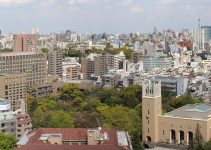The number of University-Recommended Monbukagakusho scholarship slots available dropped in 2016. Get the updated numbers.
If you want the MEXT Scholarship, you’re going to need to put in the effort to stand out from the crowd.
What if you could get paid to spend the next five years pursuing your Master’s or PhD?
- 143,000 – 148,000 yen per month stipend
- Zero tuition
- Round-trip ticket to Japan
(Figures accurate as of the 2014 scholarship period. See the MEXT homepage in Japanese for more details)
This is the Japanese Government Monbukagakusho Scholarship (MEXT Scholarship). As of 2014, there were 8,351 international students in Japan studying on the MEXT scholarship at all levels. By comparison, there were over 139,185 total international students in universities in Japan that year. It is extremely competitive, but there are ways that you can distinguish yourself from the crowd and increase your chances dramatically.
University-Recommended MEXT Scholarship: Research Students
This guide is for the University-recommended Monbukagakusho or MEXT scholarship. If you’re looking for the Embassy-recommended MEXT scholarship, please see my guide to selecting a Japanese University. You may also want to read through the section on the “Field of Study and Study Plan” in this series, as well.
There are several levels of MEXT scholarships, from undergraduate degrees and short-term Japanese language and culture study, to graduate studies. This series covers the latter category. It is for students who want to pursue a Master’s Degree or PhD in Japan and is primarily for students who want to do so in English. Most of the information on the scholarship is written only in Japanese, so my purpose here is to make it available to everyone.
Types of MEXT Research Student Scholarships
- General Category
- Available at almost any university in Japan to any applicant (except applicants from Taiwan). This category offers the most options and is the most competitive. However, for most applicants this is the only category you will be eligible to apply for.
- Priority Graduate Programs (PGP)
- There are a limited number of PGP programs approved by MEXT and each is approved for a 3-year period, only. Each PGP program has very specific criteria, including a specific field of study, scholarship slots per degree level, and in some cases nationality of applicant and/or program language.
- SATREPS and e-Asia Categories
- Both of these categories are administered by the Japan Science and Technology Agency and all applicants are related to ongoing projects and pre-screened by that agency. You can not apply for these categories outright.
That leaves us with General and PGP categories. However, for you, the applicant, the primary difference between these two categories comes in the selecting a university step. All the other strategies and instructions in this series of articles apply to all applications.
Scholarship Slot Availability
There are three kinds of slots we are concerned about: General Category, Top Global University Scholarship Slots, and PGP. I’m going to cover the PGP scholarships later, because it’s a very limited-eligibility category, and involves a lot of guesswork.
In the former two cases, it’s easy to get a rough estimate of the number of spaces available at any university.
General Category
The number of slots available dropped in 2016. The new numbers can be found here. The table below is no longer accurate as of 2016.
The number of scholarship slots per university is related to the number of international graduate students enrolled there as of the preceding year, based on the following table:
| International Graduate Students | Scholarship Slots |
|---|---|
| 0 – 25 | 1 |
| 26 – 300 | 2 |
| 301 – 700 | 3 |
| 701 – 900 | 4 |
| 901 – 1300 | 5 |
| 1301 – 1700 | 6 |
| 1701 – 1900 | 7 |
| 1901+ | 8 |
(Source: Notes for the 2015 University-Recommended MEXT Scholarship, accessed 9 Sept 2015)
Keep in mind that all numbers are subject to change. But the table above, at least, has been pretty consistent for a while.
JASSO publishes an annual list of the top 20 universities in Japan for accepting international students in English, but this list includes both undergraduate and graduate students, so I’ve gone through each university’s website from the list, as well as all of the “Top Global University” schools and looked up the number of graduate students- please see the table below.
Top Global University Project Slots
Update (Oct 2016): Based on further research into the Top Global University scholarship slots, it appears the original information in this article was only partially correct. It now appears that these slots are for MEXT Domestic Selection students and that the maximum number is the number of awardees enrolled at the university. I am sincerely sorry for the earlier error and will be following up with more information as soon as available.
MEXT Slots by University, 2016 (Unofficial)
Note: This chart has been updated to reflect the 2016 slot decrease.
| University Name | International Graduate Students | Slots |
|---|---|---|
| The University of Tokyo | 2273 | 7 |
| Waseda University | 2200 | 7 |
| Kyushu University | 1830 | 7 |
| Kyoto University | 1342 | 5 |
| Osaka University | 1127 | 5 |
| University of Tsukuba | 1207 | 5 |
| Nagoya University | < 1300 | 5 |
| Tohoku University | 1068 | 5 |
| Hokkaido University | 1065 | 5 |
| Hiroshima Univerisity | 996 | 4 |
| Tokyo Institute of Technology | 879 | 4 |
| Ritsumeikan University | 524 | 3 |
| Keio University | 570 | 3 |
| Chiba University | 641 | 3 |
| Kanazawa University | 483 | 3 |
| Meiji University | 352 | 2 |
| Sophia University | 387 | 2 |
| Toyo University | <353 | 2 |
| Tokyo University of Foreign Studies | 218 | 2 |
| Kumamoto University | 288 | 2 |
| Hosei University | 271 | 2 |
| International University of Japan | 281 | 2 |
| Tokyo Medical and Dental University | 172 | 1 |
| Ritsumeikan Asia Pacific University | 174 | 1 |
| Tokyo University of the Arts | 139 | 1 |
| Toyohashi University of Technology | <100 | 1 |
| Kyoto Institute of Technology | 112 | 1 |
| Nara Institute of Science and Technology | 192 | 1 |
| Okayama University | 104 | 1 |
| Nagaoka University of Technology | 184 | 1 |
| International Christian University | 74 | 1 |
| Shibaura Institute of Technology | 73 | 1 |
| Soka University | <100 | 1 |
| Kwansei Gakuin University | 124 | 1 |
| Akita International University | <25 | 1 |
| University of Aizu | <25 | 1 |
| Kobe University | 1057 | 5 |
| Hitotsubashi University | 468 | 3 |
| Kansai University | 330 | 3 |
| Doshisha University | 347 | 2 |
| Nihon University | 204 | 2 |
| Chuo University | 211 | 2 |
| Yokohama National University | 203 | 2 |
| Rikkyo University | 245 | 2 |
| Osaka Sangyo University | 111 | 1 |
| Takushoku University | <100 | 1 |
| Josai International University | 38 | 1 |
| Meikai Univerisity | 55 | 1 |
| Japan University of Economics | <20 | 1 |
| Tokyo International University | <25 | 1 |
International student figures are drawn from universities’ websites, but should not be considered official. Where universities do not publish specific enough information, imprecise figures are given above, as marked by < symbols.
Scholarship Slots per Graduate School
You may already be thinking that there are not many slots available, even if universities use their two extra university-funded travel slots. But the truth is, you’re competing for an even smaller number. That total number of University-Recommended MEXT scholarship slots gets divided among the graduate schools at the university.
Each graduate school evaluates applications separately based on its own criteria, and there’s no objective way to compare an applicant for a Master’s in Japanese applied linguistics with a PhD in Information Systems. So, universities have to divide their slots up among the graduate schools in advance.
This being Japan, they also need to do it in a way that could be considered fair and unbiased and, most importantly, immune to complaints and challenges. One way to do that is to assign the slots in order of the graduate schools with the most international students currently enrolled. After all, they’re the reason the university got so many slots.
So, hypothetically, first the graduate school with the most international students gets one slot, then the school with the second highest number, etc. If there aren’t enough to distribute one scholarship to each graduate school, then you could even see schools grouped to compete for one aggregate sot.
What this means to you is that you’re gong to have to be at the absolute top of your game to get this scholarship.
Of course, that’s the reason I’m writing these articles: to help you become that scholarship recipient.
Want to know more?
My ebook, How to Apply for the MEXT Scholarship has updated information on slot availability and competition levels, plus details on the application timeline, eligibility criteria, how to develop a successful applicant mindset, and how to craft your application strategy for the greatest chance of success!
Questions?
Before asking any questions in the comments below, please read through the MEXT Scholarship Application FAQ top page and specific FAQ pages to see what I’ve answered already and to find tips about how to get your questions answered faster.
You can ask your questions in the comments here, on the FAQ page, or by email and I will answer them by updating the FAQ and letting you know when the answers are available.
I’d also recommend signing up for my mailing list to get notified whenever I have updates to any of the FAQs or new articles about the MEXT scholarship!
Ads by Google:






Dear Travis,
I know this blog is about MEXT and this question might be slightly off-topic, but I was also trying to look for alternatives in case I couldn’t win either MEXT scholarships. Do you know of any other good scholarships I could apply to this year, for pursuing research in Japan related to a humanistic/Japan studies field? (In my case, theater)
Thank you again in adanvce,
Lorenzo
Hi Lorenzo,
Unfortunately, I’m not aware of any other similar scholarships that are universally available. I think I remember that the World Bank and Asian Development Bank also offer pre-enrollment, full-coverage scholarships, but only to applicants from certain nationalities.
There are also opportunities to apply for scholarships after you arrive in Japan through your university, but none of them would be as generous as the MEXT Scholarship.
Good Luck!
– Travis from TranSenz